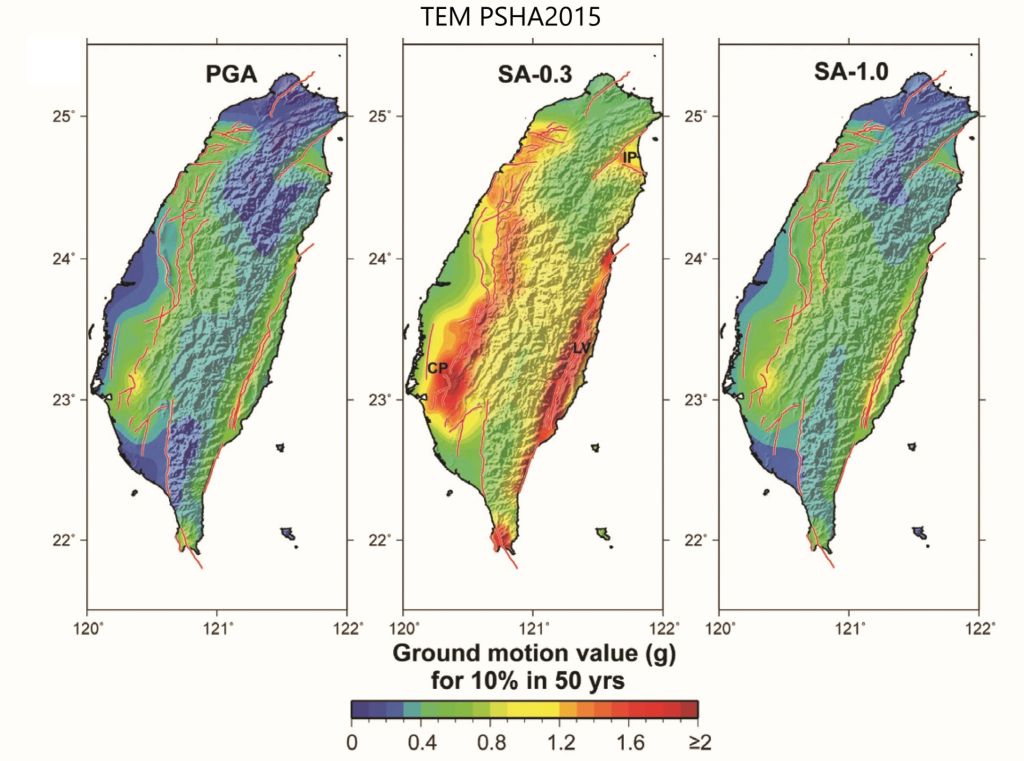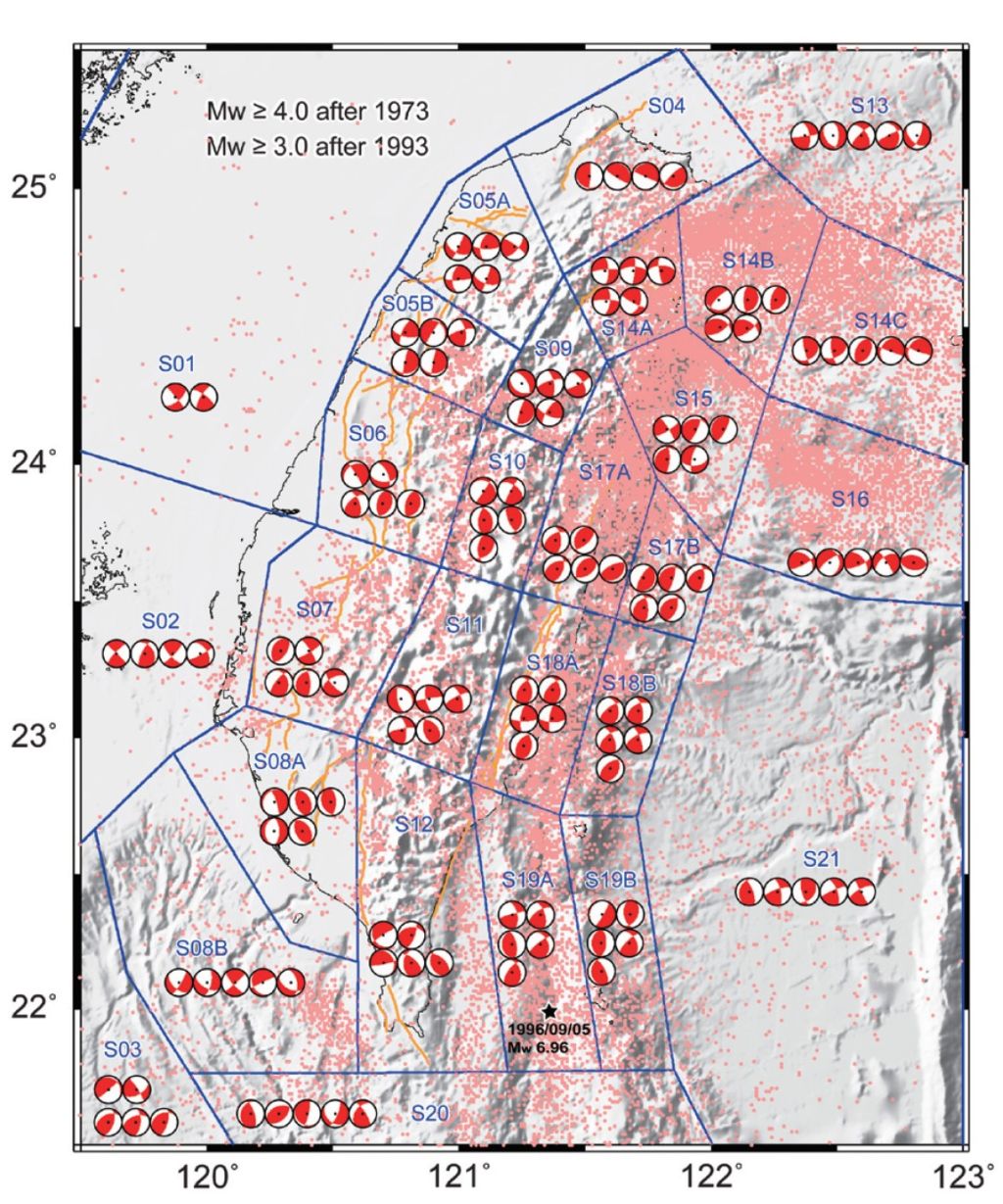| Technical Name | Probabilistic Seismic Hazard Analysis (PSHA)、Epidemic-Type Aftershock Sequence (ETAS) | ||
|---|---|---|---|
| Project Operator | National Central University, Earthquake-Disaster & Risk EvaluationManagement Center (E-DREaM) | ||
| Project Host | 馬國鳳 | ||
| Summary | After the publication of TEM PSHA2015. Updated version to the TEM PSHA2019, we considered updated seismogenic structure database, newly identified structure with 3D geometry, an earthquake catalog to 2016, state-of-the-art seismic models,site amplification factors. The ETAS (Epidemic-Type Aftershock Sequence) model aims to forecast the aftershocks from a large mainshock in real-timereduce its effectiveness. |
||
| Scientific Breakthrough | PSHA-2019 implementing a time-dependent factor through Brownian Passage Time model. Including possibility of earthquake on multiple-structure. The first seismic hazard map incorporating site condition in Taiwan. The ETAS model could be used to develop a real-time aftershock forecasting systemoffer the possible effect of the aftershocks within 24 hours after the main shock. |
||
| Industrial Applicability | Three features of PSHA-2019: Implementing a time-dependent factor for a better seismic model. Including possibility of earthquake on multiple-structure to estimate plausible disaster scenarios. First seismic hazard map incorporating site condition in Taiwan. The real-time aftershock forecasting system can offer the aftershock information, its possible damage,the reference of the slightly damaged buildingsthe manufacturing operations. |
||
| Keyword | Probabilistic Seismic Hazard Analysis PSHA Seismology ETAS model aftershock forecasting Poisson process Seismic Hazard PSHA2015 PSHA2019 TEM | ||
- shaokai@e-dream.tw
other people also saw







